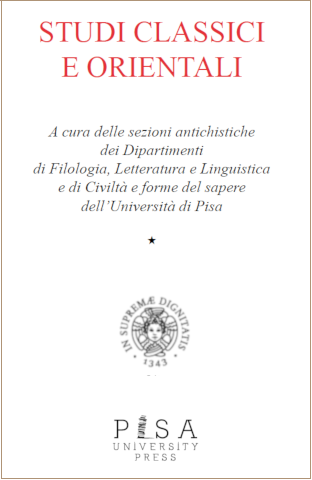Esorcisti e prebende dell’esorcista nella Babilonia di I millennio: il caso di Uruk
Abstract
In the study of Mesopotamian medicine the distinction between the role and duties of the āšipu, asû and mašmaššu, is of primary importance. In this article, special attention is paid to the distinction between the three professionals in 1st mill. BC sources from Babylonia, and in particular to the role of the exorcist (āšipu). This distinction is investigated by comparing the data offered by Nabu-aplaiddina's temple ordinance (OECT 1, 20) with those of ten contracts dealing with exorcists' prebends, eight of which in the British Museum's collection. In particular new light is shed on the raison d'être for the subdivision into sevenths of the āšiputu prebend in the prebendary corpus from Uruk dating to the Seleucid period.


